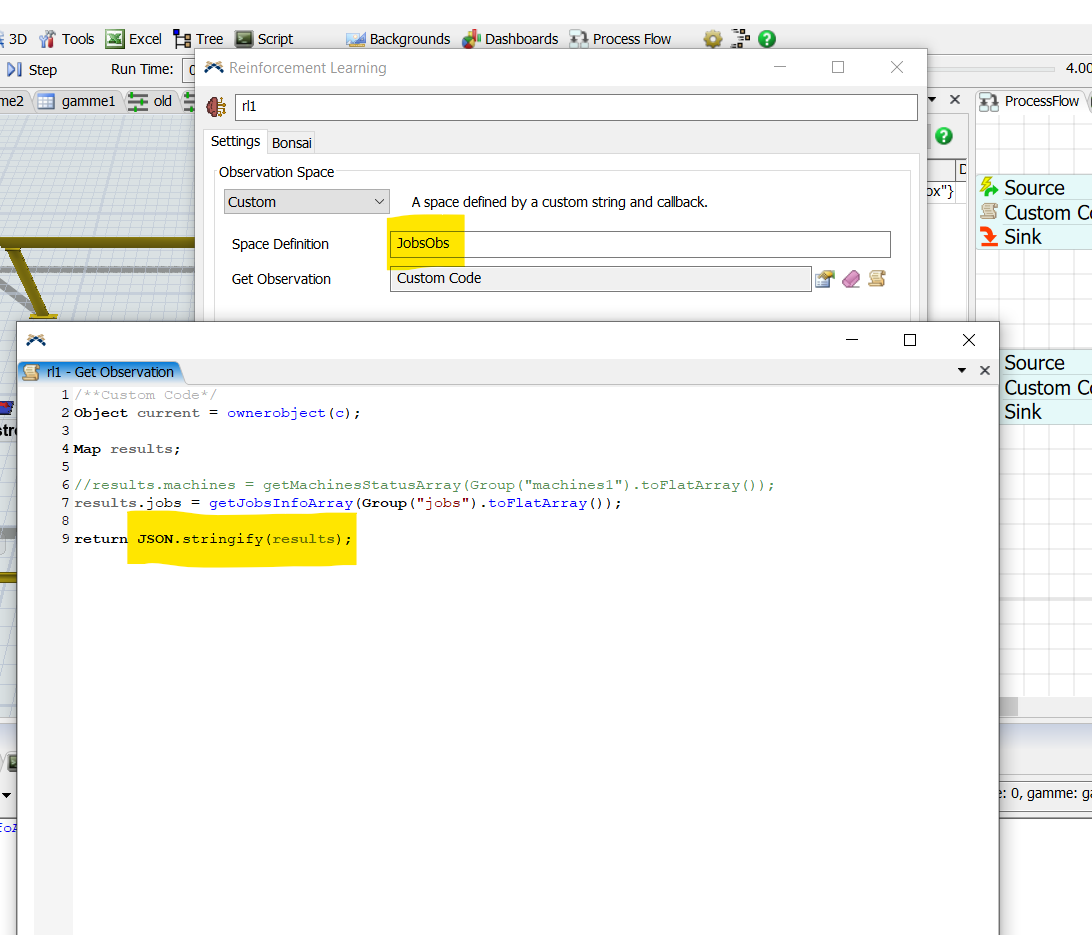Hello,
I'm trying to figure out how to use RL with Flexsim. I'm able to run the changeover example with no problem. I'm working with a scheduling problem so my observations cannot fit in a simple parameters table. I just need to have an example of "custom observation space" to have an idea how I can do that to define my observation space.
Thank you,



